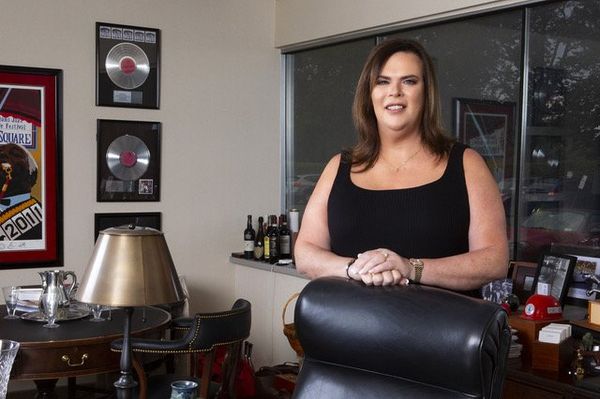By Nick Lehr, The Conversation
Why are trans youth more visible these days? Is it due to more widespread acceptance, or more media coverage? Just how many trans kids are there?
There seem to be few clear-cut answers. But after talking with a number of scholars who study transgender youth – and editing articles written by them – I learned that the history of trans kids and some ongoing research can shed some light on how the U.S. got to this moment.
Here are some of the key points from their articles.
1. A history of trans youth
Gender dysphoria – which refers to distress that happens when there's a mismatch between the sex you were assigned at birth and your psychological sense of your gender – is very real. The history of trans youth offers some of the most compelling proof that trans kids aren't some sort of new phenomenon.
Jules Gill Peterson, author of the book “Histories of the Transgender Child," writes about the teens and young adults who, in the first half of the 20th century, ventured to Johns Hopkins Hospital, which was then the only medical facility in the country for people questioning their sex and gender.
In the papers of doctors and specialists, Peterson found stories of patients who, even though they lived in a world largely devoid of trans role models, nonetheless felt dysphoria deep in their bones. One trans boy dropped out of school because he was so embarrassed about being forced to wear girls' clothes. Then there was the trans girl who desperately wanted to pursue a career as a dancer, but whose parents refused to let her live openly as a girl and chase her dreams.
All faced down the judgment of their parents, peers and doctors in the hopes of creating “a presence where there was an absence" – how trans actress Hari Nef in 2016 described the impulse to transition.
2. The early internet’s key role
For most of the 20th century, patients weren't exactly encouraged to embrace a different gender. Instead, doctors tended to view patients experiencing gender dysphoria as canvases for conversion therapy or experimental treatments.
In the 1970s, UCLA received government funding for its “feminine boy project," in which effeminate boys were brought in and their parents were instructed to withhold affection and mete out corporal punishment whenever their kids didn't act in traditionally masculine ways.
Suffice it to say, these “treatments" could be traumatizing. Meanwhile, many teens with gender dysphoria continued to either suffer silently in the closet, or face immense backlash for coming out.
A decade later, in the internet's infancy, trans youth jumped at the opportunity to connect with one another. Long isolated in their dysphoria, these teens found and built communities first on bulletin board systems and email lists and later on web hosting services like Geocities.
Avery Dame-Griff, the director of the Queer History Digital Project, has studied these early internet communities and how they gave trans teens a place to be themselves without the threat of rejection or reprisal. He writes that in these spaces, they were able to use “gendered colors and graphics without fear of outing themselves" or post “photos wearing the clothes they felt comfortable in." Some even used their own homepages to track the progression of their transition.
3. Survey says?
That young people with gender dysphoria in the 20th century – with scant social support and few resources – nonetheless sought help and advice from doctors and, later, strangers on the internet is a testament to the truth of their experiences.
But past examples don't necessarily explain current trends.
It's certainly true that, thanks to growing acceptance from parents, doctors and peers, young people with gender dysphoria are becoming increasingly comfortable coming out of the closet and transitioning.
There is, however, a difference between gender dysphoria and gender identification. And it's the latter that can fan out across the population as more young people become comfortable with the language, nuances and politics of gender.
Someone might identify as transgender, genderfluid, genderqueer or nonbinary – which means they don't fit neatly into the category of “male" or “female" – because they want to embrace ambiguity, reject categorization or tap into different sides of their personality. Familiarity and dexterity with the terminology can be a reflection of class, culture, education and politics. (It's worth noting that the word “transgender" didn't even exist in the English language until the 1960s.)
[You're smart and curious about the world. So are The Conversation's authors and editors. You can read us daily by subscribing to our newsletter.]
For these reasons, social scientists have had a difficult time pinning down the exact numbers of trans youth. One widely cited 2017 study by the Williams Institute at the UCLA School of Law estimated that 0.7% of teens ages 13 to 17 identified as transgender, while a U.S. Centers for Disease Control and Prevention study from that same year found that 1.8% of high school students identified as transgender.
But Kacie Kidd, an adolescent medicine fellow at the University of Pittsburgh's Center for Adolescent & Young Adult Health, saw a flaw in the way these surveys – and others – had been conducted. They often simply asked kids if they were transgender. But in her work with gender-questioning youth, she had noticed that not everyone called themselves “transgender." Far from it.
So she and her team designed a survey for high school students in Pittsburgh using more inclusive questions. Of the 3,168 young people who completed the questions, 9.2% had a gender identity that did not fully align with their sex assigned at birth.
Yet before statistics like this get thrown around as indicative of some sort of social contagion that's exposing teens to life-altering medical interventions, it's important to parse what it means to identify a certain way, and what it means to truly have dysphoria. Just because someone doesn't want to identify as male or female in a traditional sense doesn't mean that they'll need to immediately start taking puberty blockers.
“Not all gender-diverse people have gender dysphoria," Kidd writes. “But those who do may benefit from gender-affirming care."
Editor's note: This story is a roundup of articles from The Conversation's archives.
Transgender youth. This article is part of a series exploring the social and medical issues of transgender children and their families. Sign up for a four-email newsletter “course" to learn about the latest research on trans youth.![]()
Nick Lehr, Arts + Culture Editor, The Conversation
This article is republished from The Conversation under a Creative Commons license. Read the original article.








